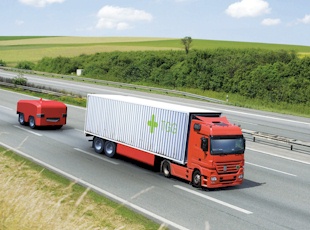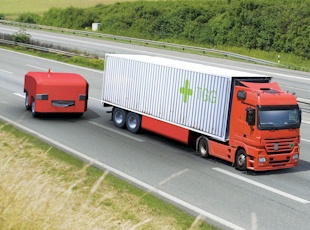The Future of Kers Technology

As racing fans will no doubt know, kinetic energy recovery systems (KERS) have received a lot of attention over the last few months. Unfortunately, however, discussions regarding this technology have not been as constructive as they could have been. GG VAN ROOYEN reports
KERS was proposed for introduction into the 2009 Formula 1 racing season a while ago in order to make passing easier, to improve the cars’ environmental friendliness and to act as a launch pad for car companies into this new technology.
It was announced that teams would have 18 months to develop and implement the technology and that it would be mandatory on all vehicles. When the financial crisis hit last year, however, its implementation was almost delayed, but a compromise was eventually struck allowing teams to decide whether they
would implement KERS in their 2009 vehicles or not.
The technology – which works by storing kinetic energy created through braking instead of simply dissipating it as heat – allows stored energy to be fed back into a vehicle’s power system, thereby boosting its performance. In a Formula 1 car, this power can be accessed by pressing a button on the steering wheel
that adds up to 80 hp for a maximum of 6.5 seconds per lap.
However, while quite a few teams have used the system so far during the season, it has remained very controversial.
Some view the system as an indispensible new strategic tool, while others believe that KERS technology has no place in motorsport. Questions regarding its cost and safety have specifically been raised. Implementing such a system is very expensive – Flavio Briatore, managing director of the Renault team,
has stated that KERS has cost them half of their €30 million budget. In addition, it is potentially dangerous – Kimi Raikkonen’s KERS short-circuited during the Malaysian Grand Prix.
RIFE WITH POSSIBILITIES
While the wisdom of implementing KERS technology in Formula 1 cars is debatable, there is one undeniable benefit: this groundbreaking and potentially cost-saving technology is suddenly receiving a lot of attention. And though its usefulness in racing might be a contentious issue, its potential value in other applications is indisputable.
KERS can be especially useful in commercial vehicles. The difference, though, is that the technology can be used to lessen fuel consumption and CO2 output by reducing the energy required from the diesel engine, instead of simply increasing the vehicle’s power output, as is the case in Formula 1 cars.
 Two companies, Bosch Rexroth and Parker Hannifin, are currently refining systems designed for commercial vehicles – such as refuse trucks – that have high start-and-stop applications. As with the Formula 1 system, energy created during braking is stored and fed back into the energy system when needed. The KERS assists the vehicle’s conventional diesel engine, reducing the energy that it needs to generate and thereby lessening fuel consumption significantly.
Two companies, Bosch Rexroth and Parker Hannifin, are currently refining systems designed for commercial vehicles – such as refuse trucks – that have high start-and-stop applications. As with the Formula 1 system, energy created during braking is stored and fed back into the energy system when needed. The KERS assists the vehicle’s conventional diesel engine, reducing the energy that it needs to generate and thereby lessening fuel consumption significantly.
According to both companies, the system can reduce fuel consumption by between 25 and 50%, decrease harmful emissions and diminish brake wear.
“Based on the feedback we’ve received to date, we are confident that Parker’s advanced series hydraulic hybrid technology has real potential to significantly improve the fuel efficiency, productivity, and environmental footprint of refuse and similar heavy trucks across the globe,” says Vance Zanardelli, manager of Parker’s Energy Recovery Business.
KERS FOR TRAILERS
While Bosch Rexroth and Parker Hannifin have so far mostly focused their KERS trials on refuse trucks, it is only a matter of time until this technology finds its way into trailer design.
In fact, though nowhere near production, a concept for such a system already exists. The Greener Grass – a self-initiated project from American design strategy and product development firm, Kaleidoscope – has designed two concepts for a regenerative braking system for trailers that, at least in theory, could fit a kinetic energy recovery system to any existing trailer.
 The Greener Grass’ first design will make use of the large amount of space that a trailer would have available to fit batteries. While a long-haul truck pulling a trailer might not have the high stop-and-start cycles of a vehicle like a refuse truck, it would have another advantage: more energy could be stored for longer periods. In this concept an entire bank of batteries would be mounted under the trailer’s chassis. Electric motor-generators would then also be fitted to the tandem wheel axles and connected to the batteries. Energy could subsequently be created by the generators through regenerative braking and stored in the batteries until required.
The Greener Grass’ first design will make use of the large amount of space that a trailer would have available to fit batteries. While a long-haul truck pulling a trailer might not have the high stop-and-start cycles of a vehicle like a refuse truck, it would have another advantage: more energy could be stored for longer periods. In this concept an entire bank of batteries would be mounted under the trailer’s chassis. Electric motor-generators would then also be fitted to the tandem wheel axles and connected to the batteries. Energy could subsequently be created by the generators through regenerative braking and stored in the batteries until required.
When the vehicle then needs to accelerate suddenly or scale a steep hill, the stored power can be used to reduce the strain on the diesel engine. As is the case in other vehicles, this would greatly lessen fuel consumption and CO2 output.
The Greener Grass’ second concept is a bit more fantastical. In this scenario, a small, independent unit – called a Remote Hybrid Helper (RHH) – would be stationed at the bottom of a very steep hill and attach itself via autopilot to the back of a trailer going uphill. Instead of having batteries connected
to a trailer’s chassis, the batteries would be placed inside the unmanned RHH, which would connect to the back of the trailer and help push it uphill. Once it reaches the top, it would decouple and wait for a vehicle going in the opposite direction. When a vehicle with a trailer passes, the RHH connects with the
trailer and makes use of the energy created during the truck’s braking to recharge its batteries.
In order for this to work, every trailer that makes use of the system would obviously need the technology necessary to connect with the RHH, make use of its power and help charge it through regenerative braking. This – combined with the accuracy that the piloting system would need to have – makes it extremely unlikely that this concept will see the light of day anytime soon, but it’s at least an indication of what is possible in the future.
LONG-TERM USEFULNESS
While the application of KERS technology to Formula 1 cars has helped bring regenerative braking to the attention of many companies, its long-term usefulness lies outside of motorsport.
It is already being used successfully in passenger vehicles like the Toyota Prius, and it won’t be long before regenerative braking technology becomes a regular feature on commercial vehicles.
Trailers, specifically, are ideal because of the ample space available to fit motor generators and batteries. Instead of simply being a load that truck tractors have to pull, trailers might soon become a valuable secondary source of energy.
Published by
Focus on Transport
focusmagsa




